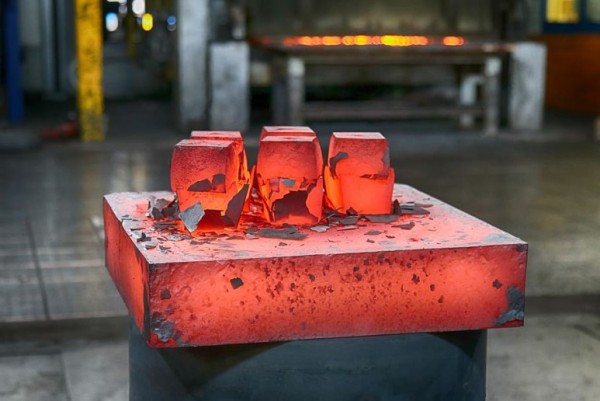-
About
-
Our Brand
-
Products
-
Community
Community
Blog
Blog
Difference Between Annealing and Tempering
- Writer
- STEELTOPIA
- Date
- 23-09-21
Heat Treatments
Annealing and tempering are both methods of heat treating metals. The purpose of heat treatment is to intentionally alter the physical or chemical properties of metals. Heat treatment can affect various properties of metal products, including strength, hardness, ductility, toughness, brittleness, and machinability.
Typically, there are three main variables that influence the heat treatment of metals, which are the temperature at which the manufacturer heats the metal, how long it stays at that temperature, and the cooling method or rate. These variables can vary depending on the type of metal undergoing heat treatment and the desired outcomes sought by the customer. However, precise control of all three of these factors is essential for effective heat treatment.

Annealing
Annealing is a three-stage heat treatment process for metals that involves heating the metal, relieving stress, and increasing ductility. During annealing, the material is heated to the ideal temperature, held at that temperature for a specific duration, and then gradually cooled. The primary purpose of annealing is to reduce hardness for smoother processing.
The three stages of annealing heat treatment process are recovery, recrystallization, and grain growth.
1) Recovery
The first stage of annealing, known as recovery, aims to restore the physical properties of the metal. Heating the metal to the annealing temperature reduces residual stresses in the component's structure and enhances ductility.
2) Recrystallization
The differences between annealing and tempering become apparent during this stage. Recrystallization involves raising the material back to a temperature, which is above the metal's recrystallization temperature but below its melting point. During this process, new grains form to replace deformed or elongated particles caused by cold working. This reduces the material's hardness and further increases ductility.
3) Grain Growth
In the final stage, new grains that began forming during recrystallization continue to grow to completion. Precise control of the cooling process and maintaining a specific rate of cooling during this stage helps produce a material with higher ductility and less rigidity.
Tempering
Tempering is a heat treatment process that enhances the toughness of steel, making it hard enough to withstand machining while reducing its brittleness. To temper, the metal must reach a temperature below its lower critical temperature. Temperatures can vary depending on the alloy but are broadly categorized into three types: low-temperature, medium-temperature, and high-temperature tempering.
- Low-temperature tempering ranges from 150 to 250°C and is aimed at reducing internal stresses and brittleness while maintaining high hardness and wear resistance after quenching.
- Medium-temperature tempering ranges from 350 to 500°C and is used to enhance elasticity and strength.
- High-temperature tempering ranges from 500 to 650°C, and steel parts tempered at temperatures above 500°C are referred to as high-temperature tempered hardened steel components.
Once the steel reaches the lower critical temperature, it is held at that point for a predetermined time. The critical temperature is determined by the type of steel, and the required time at that temperature is also determined accordingly.
Other variables that affect tempering include the time the metal spends at the critical temperature and the rate of cooling. These two factors impact the mechanical properties of the material.
The information provided on this webpage is intended solely for informational purposes. Steeltopia does not make any explicit or implied representations or warranties regarding the accuracy, comprehensiveness, or validity of this information.


 HOME
HOME